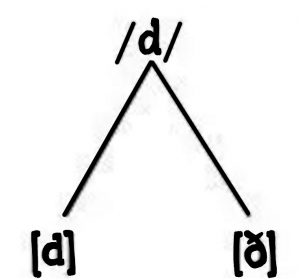Many people know of the Mexican holiday Día de Los Muertos, which is filled with vibrant colors and intricately painted faces. What many people don’t know is that this holiday originated over 3000 years ago with the Aztec empire. The Spanish Conquistadors first recorded a Día de Los Muertos celebration during the 16th century. When the Aztecs had begun this tradition, they weren’t remembering loved ones who passed, but they were worshiping the queen of the underworld and protector of the dead.1

This Aztec queen was Mictecacihuatl, “Lady of the Dead,” Queen of Mictlan.2 According to Aztec legend, Mictecacihuatl was sacrificed as an infant and placed in the underworld to become the wife of Miclantecuhtl, the king of the underworld. In the underworld, her role was to watch over the bones of past lives, which would be used to create new life in the living world. However, in order for the bones to be able to create new life, they needed to be stolen from Mictecacihuatl to be brought to the living world. As their protector, part of her own life would be carried with the stolen bones. Even after the bones were stolen, she would continue her duty to protect them by returning to the living world every year to make sure the bones were being properly taken care of. When the time came for her to return to the living world, the Aztecs celebrated Mictecacihuatl’s return with death festivals and traditional dances, to honor her for her protection of the bones that created life and to seek protection for those who died.3

The Aztecs celebrated Día de Los Muertos much differently than it is celebrated today due to the Spanish conquistadors and Catholicism. The Spanish changed the lives of the indigenous peoples wherever they went, from taking land for the Spanish throne to converting people to Catholicism. Many traditions changed, including those of Día de Los Muertos.4 The Aztecs laid out offerings for the King and Queen of the Underworld for the whole month of August, and the Spanish were the first outsiders to witness this honoring of Mictecacihuatl by the Aztecs. Not long after the Spanish exposure to this festival, the Spanish combined the Aztec tradition with Catholicism. Syncretism, the blending of Spanish and indigenous beliefs and practices, combined the Aztec traditions of Día de Los Muertos with the Spanish traditions of All Saint’s Day and All Souls Day.5 Some examples of syncretism between Catholicism and Día de Los Muertos are the symbols that are most recognizable with Día de Muertos, such as decorated skulls and skeletons, and the Spanish character “La Catrina,” who represents Mictecacihuatl.6 The merging of Catholicism with the Aztec religious beliefs began the evolution of how Día de Los Muertos, transforming how it is celebrated today.

Despite that the name Día de Los Muertos translates to Day of the Dead in English, the holiday is actually the celebration of life. Día de Los Muertos doesn’t focus on death and mourning of a loved one. It’s seen as a happy celebration where family members of all generations, deceased and alive, can be together as one. The traditions of this holiday have changed from honoring the queen of the underworld Mictecacihuatl to honoring those who have passed.7 It’s a time of colorful festivals and parades, beautifully painted colorful skulls, marigold flowers, decorated ofrendas, grave site visits and the smells of traditional Mexican foods and incense in the air. Although it is primarily celebrated in Mexico, some parts of the United States, especially cities and towns on the Mexican border, have adopted the tradition and celebrate the remembrance of their deceased loved ones.
- MasterFILE Complete, 2008, s.v. “Día de los Muertos, by Benjamin Perea. ↵
- Sin Jones, Mictecacihuatl, Santa Muerte, 2010, 1-16. ↵
- Sin Jones, Mictecacihuatl, Santa Muerte, 2010, 1-16. ↵
- Mark Lacy, Origins of El Día de Los Muertos: The Prehispanic Festival of the Dead Defies Cultural Invasions of Mexico, (History Institute for Culture), 1. ↵
- Mark Lacy, Origins of El Día de Los Muertos: The Prehispanic Festival of the Dead Defies Cultural Invasions of Mexico, (History Institute for Culture), 1. ↵
- Mark Lacy, Origins of El Día de Los Muertos: The Prehispanic Festival of the Dead Defies Cultural Invasions of Mexico, (History Institute for Culture), 1. ↵
- Christina Zarate, Día de Los Muertos, (Smithsonian National Museum of American History), 2-7. ↵



114 comments
Richard Morales
Dia de los Muertos has always been an interesting holiday to me. I was delighted to learn of the Aztec orgin of this tradition of celebrating the dead. Although it is a beautiful thing to celebrate your dead loved ones it was gruesome learning about the Lady of the Dead and her sacrificing of an infant. Overall great article highlighting the three thousand year old tradition of celebration of death.
Marina Castro
Cool article! We all love to celebrate El Día de los Muertos but not many of us are aware of the origins. Although short, this article was very informative and really entertaining to read. Even though it not part of our culture, most people celebrate this day because it has a beautiful meaning behind it, as oppose to what most people think.
Engelbert Madrid
Dia de los Muertos is a celebration that is celebrated among the Catholic and Hispanic community, in which is important to many families. Although I never celebrated Dia de los Muertos due to my family’s non-dimensional Christian beliefs, I think it’s interesting how many families celebrate the death of their loved ones. This tradition is one of the things that brings communities together, especially in communities that have different class and social groups.
Ariana Melendez
It is very interesting to learn about the history of a holiday that has been a part of Mexican culture for so long. It is also hard to believe that it has changed very much. Still, some aspects seem the same for me; they are just used for different purposes. For example the ofrendas symbolize a safe passage for our loved ones and that is what the goddess did.
Jasmine Rocha
This was a nice short article about the origins of the now modern celebration of Dia de Los Muertos came from the old Aztec tradition of the day of the dead and the combination of Catholicism on the culture and the celebration. I was good that the author clarified that the day of the dead did not celebrate death but life. I feel that the author could have added different impacts on the holiday and where is it celebrated nowadays. The background of the holiday was something I never knew and it’s nice to know now.
Alejandra Chavez
I love how the author included how Catholicism was changing key aspects of the celebration of Dia de los Muertos. I never knew that a lot of things were changed, much less this celebration that I’ve taken part in originates from Aztec beginnings. I’ve grown up practicing this but I never knew exactly how it began. I appreciate the information being provided in this passage. It really stayed with me.
Nathan Hartley
I really like the idea of a celebration of people’s life. I think that not enough people celebrate being alive and the miracle of life. I also think that this is a great way to bring family together to honor our ancestors. I also like how the holiday changes people perspective of death and loss.
Alexandria Zapata
I loved the holiday of Dia de los Muertos, and it is really interesting how it started by worshiping the queen of the underworld (Mictecacihuatl), which is very different from how we portray it today. I loved reading this article and seeing all the holidays originate from one beginning. We merged the Catholic faith and the Aztec faith into many beautiful things.
Jennifer Salas
My favorite thing about Dia de los Muertos is that instead of being sad over someone passing away they choose to celebrate their life and be happy they got to be part of it. I enjoyed reading this article because I got the background and the history of this holiday. I love seeing the celebrations and people dressing up and honoring their loved ones.
Annissa Noblejas
This was my first introduction into the history of this holiday. Growing up on the US/Mexico border but not being of Hispanic decent, it was always just pretty decorations in my mind, and I enjoyed learning about the culture influences. I am not surprised to learn that the holiday was later ‘Christianized’ as so many other holidays have been around the world. It is a pleasant notion of having a day where all family, alive or dead, can be together again.